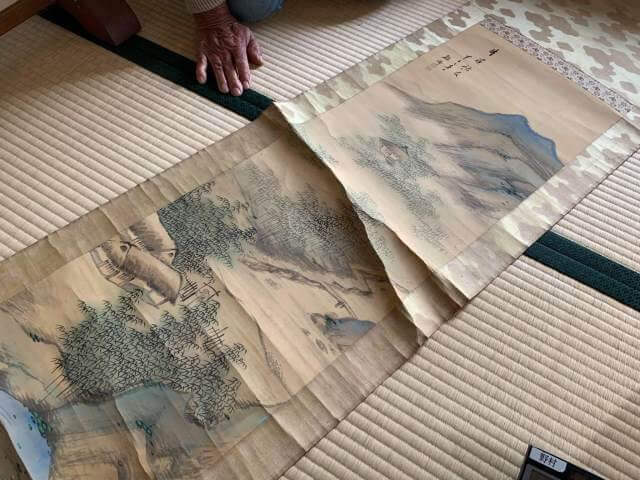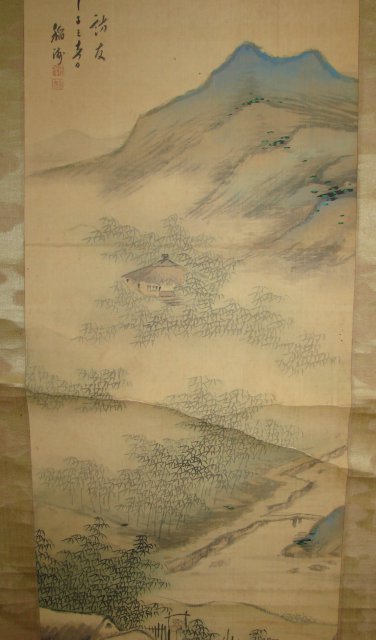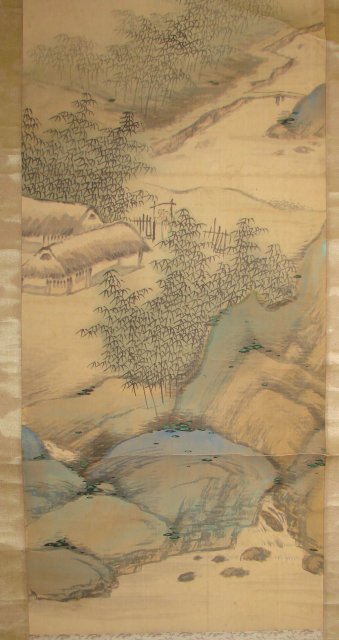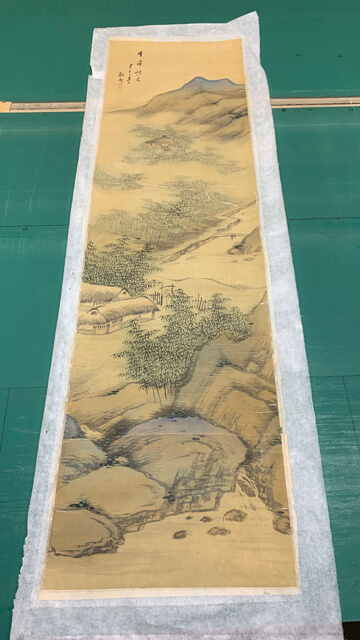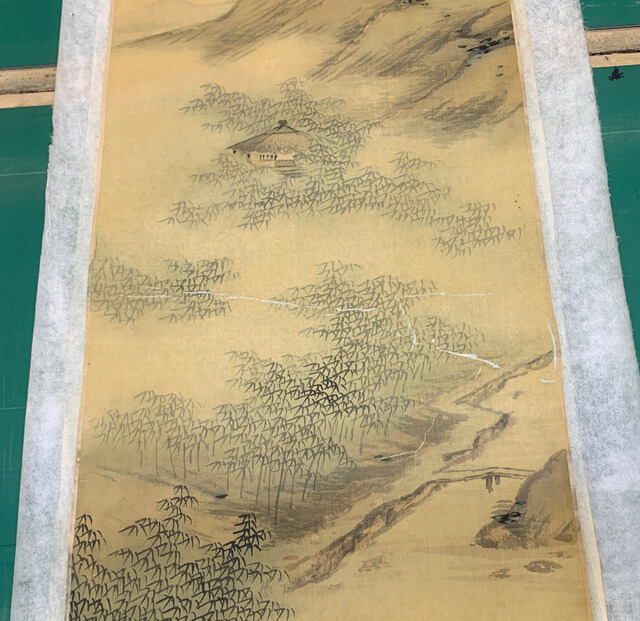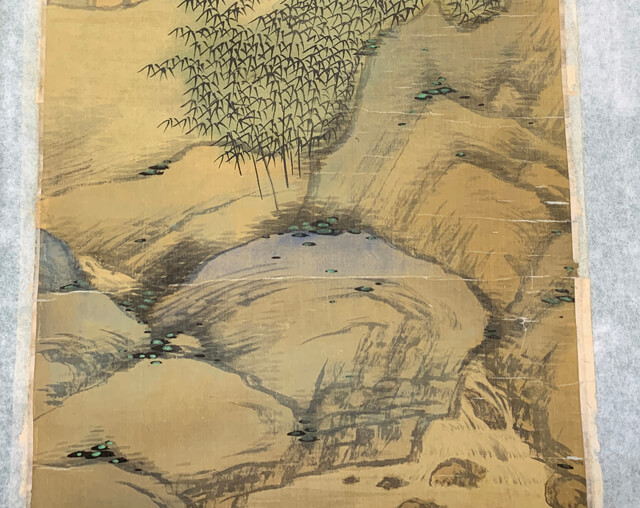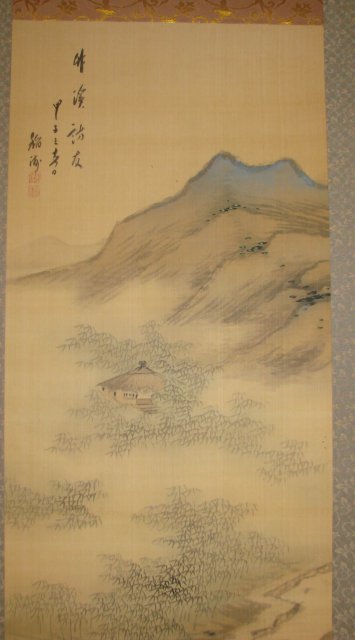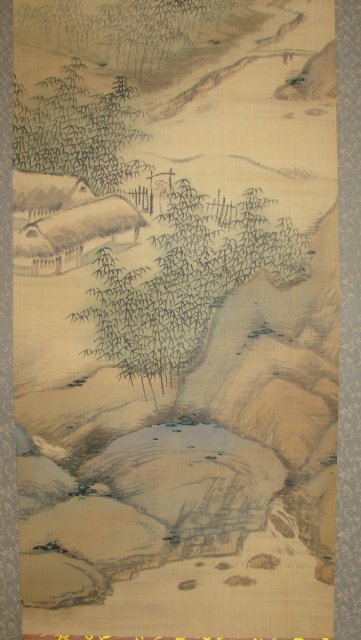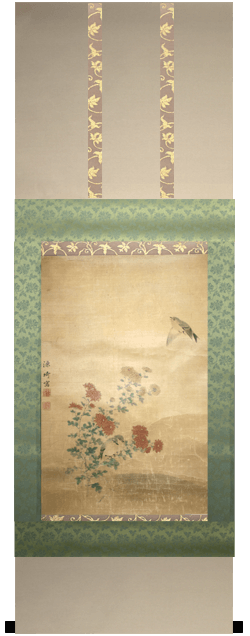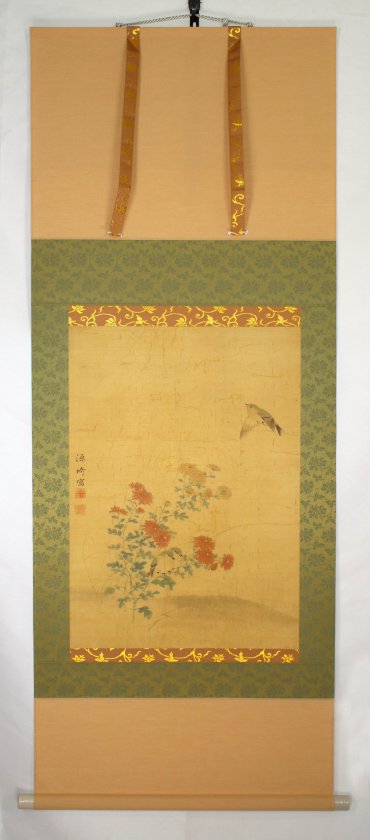Request for Restoration of Severely Damaged Kakejiku (Hanging Scroll) from Germany
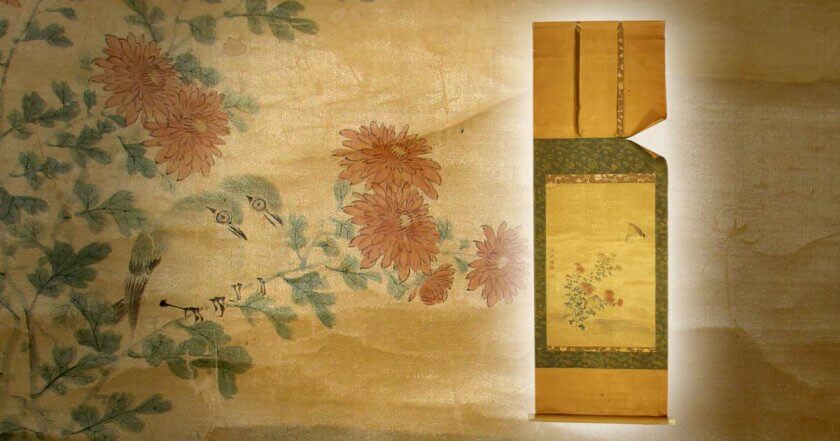
Request for Restoration of Severely Damaged Kakejiku (Hanging Scroll) from Germany
Contents
- 1 Request for Restoration of Severe Damaged Kakejiku from Germany
- 2 The Arrival of the Kakejiku and Confirming the Details
- 3 Specifications of the Remounting
- 4 Restoration Process
- 4.1 Omote-uchi
- 4.2 Removal of Old Backing Paper
- 4.3 Cleaning
- 4.4 Applying New Backing Paper
- 4.5 Removing Facing Paper
- 4.6 Hosai (Toning)
- 4.7 Preventive Measure against Creases: Ore-fuse (Reinforcing the Existing Creases from the Back of the Painting)
- 4.8 Cut and Join (Tsuke-mawashi/Kiri-tsugi)
- 4.9 Folding Over the Edge (Mimi-ori)
- 4.10 Finishing
- 5 Restoration Completed
- 6 Feedback from the Client
- 7 Movie
Request for Restoration of Severe Damaged Kakejiku from Germany
We have received many inquiries about restoration of kakejiku from all over the world. This time, our story is about a request for remounting a severely damaged kakejiku (hanging scroll) from Germany. We first had a look at the photos of the scroll sent by the client in Germany with the inquiry.
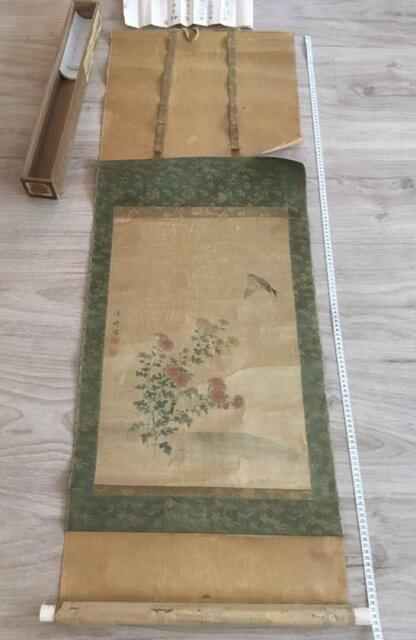
The kakejiku was seriously damaged. (Painted by Komai Genki.)
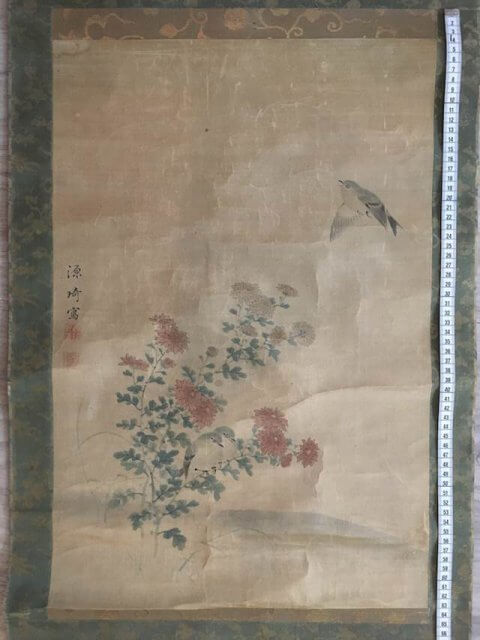
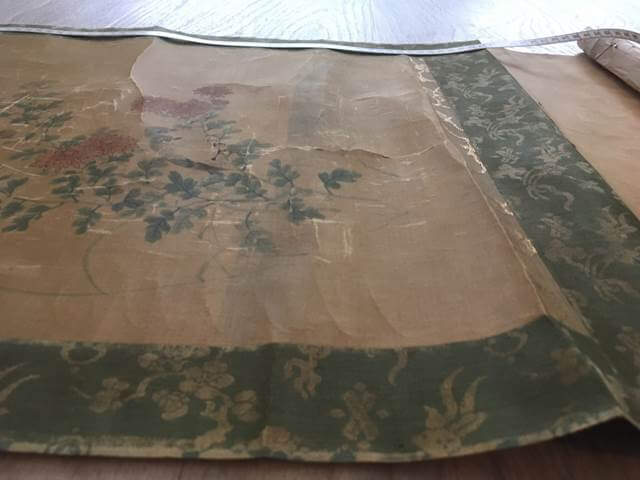
On the painting, we noticed some areas whose colours look different from other areas, having scratches/scars. These areas were brittle and we assumed they would tear if the backing paper was removed.
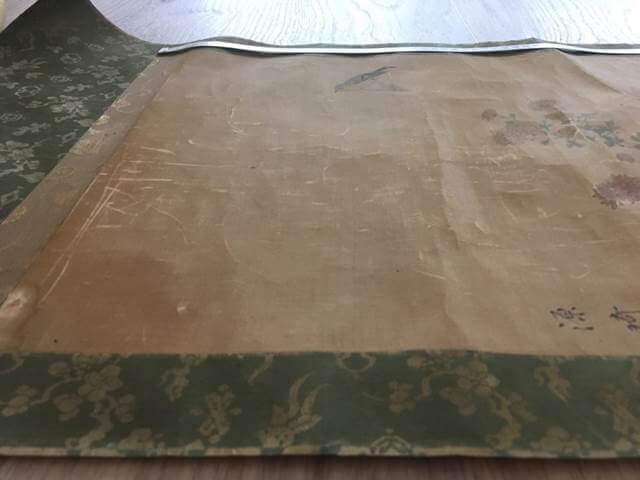
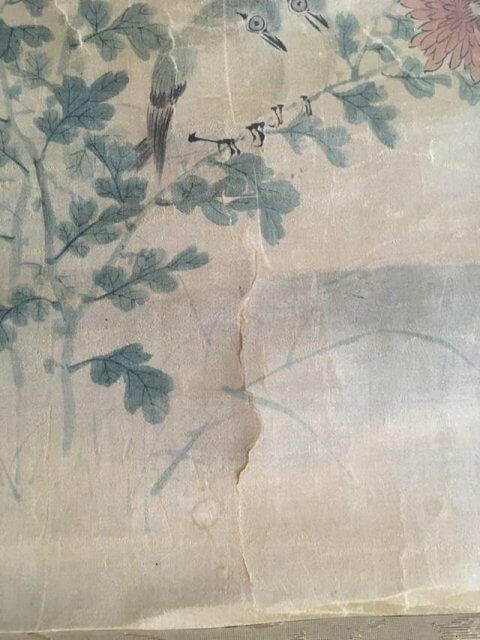
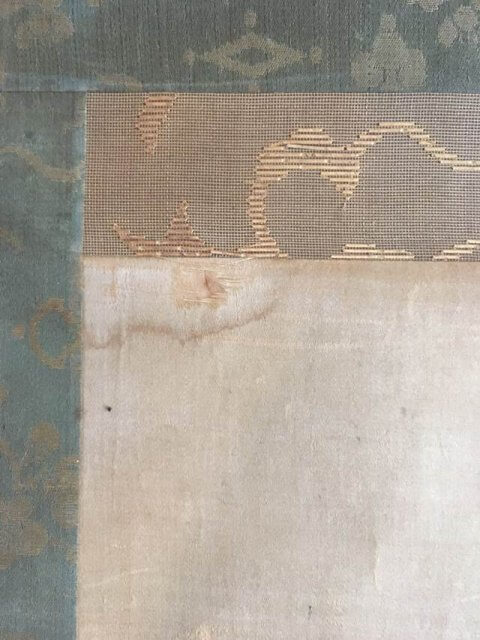
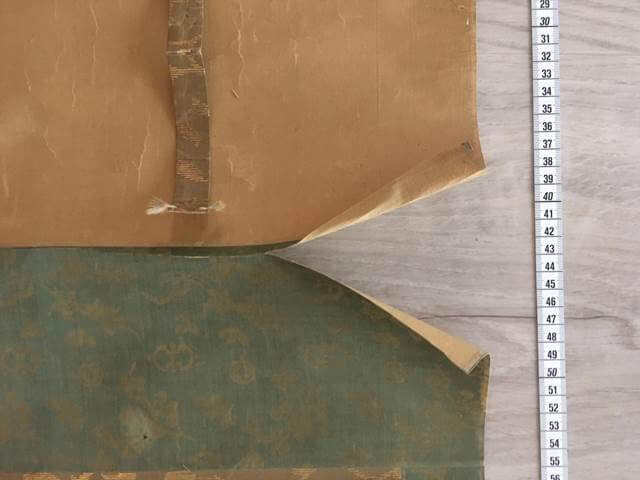
After confirming the photos, we replied to the client as below.
We will proceed our work very carefully to protect your kakejiku during the restoration process.
For areas suffering loss of painting/materials and whose colours became uneven, we highly recommend “hosai/retouch of the painting” as an
option for the natural look.For dirt and stains attached to the artwork, we will attend to them as much as we can. However, please note that this artwork will not stand the strong chemicals and intense work so we would like to decide how far we will proceed, depending on how it goes. The strain/dirt removal may not to be proceeded if we think it’s best not to for your artwork.
The client’s follow-up question was:
Do you feel confident, that the silk picture can be preserved without taking significant damage from the remounting process? (please note that no insult to your esteemed work is intended by this question)?
We did understand his concern about significant damage from the remounting process.
Our answer was as below:
The more a mounter experienced, the better understanding of the potential risks associated with the process he/she has. Therefore, we cannot say that we are 100% sure that nothing will happen. To tell the truth, we never know until we start the process. Some turns out to be an easy task, some turns out to be the opposite, contrary to our expectations.
However, we have expertise in making/remounting kakejiku for almost 50 years and with our knowledge and experience, we gained a high reputation and trust from our cclients in Japan and overseas. It is our commitment that we do our very best(100%) to strive for the highest for our clients.
For your reference, we would like to show you some photos of our recent restoration. The scroll had similar characteristics to your scroll so we think this will show you an overall view of the restoration process.
A material of the painting is silk. There are many deep creases. We are sure they tears after removing old backing paper.
To prevent tears, we do a process called “omote-uchi” which is a technique used for deeply damaged painting and national important cultural properties.
This is how it works. First, The surface of the painting will be protected with special paste. Once it dries, we will remove the old backings and apply the 1st backing(new paper). After the 1st backing is finished, we will remove the omote-uchi.
The photo below: This is the painting with a new backing paper after we remove the old backings and omote-uchi.
Thanks to omote-uchi, we could keep the tears as minimum as possible, however the tears caused by the creases remained as shown in the photo. (White scratches)
Adding colors to the tears is the process of “hosai”. After hosai, we will do “ore-fuse” which is an application of thin strip Japanese paper to the backside of the painting for reinforcement.
The photo below: This is the finished scroll after every restoration process is done.
Please check how the tears became unnoticeable after hosai.
I hope this clarifies your concern. At least, we can say any significant damage was made during the remounting process on the painting. We are always very careful with a remounting process, in order to keep the painting as safe and beautiful as possible.
He was convinced by our answer and sent the scroll to us.
The Arrival of the Kakejiku and Confirming the Details
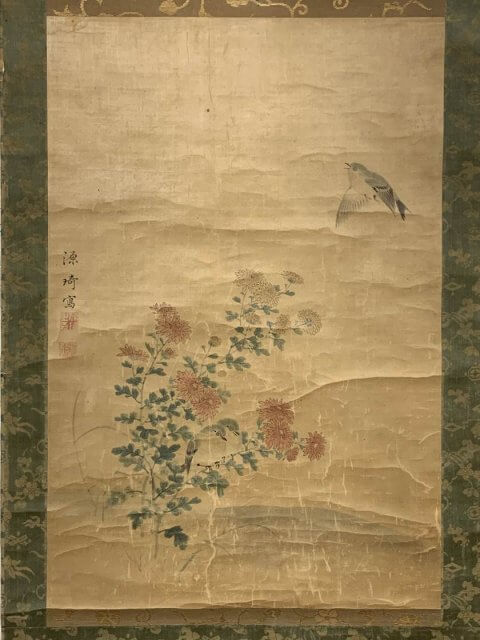
We confirmed the condition of the scroll in person, and found that the damage was much deeper than we had expected.
The areas in the red circles were especially severely damaged. For example, they were already torn (the silk was brittle and very dry) and there were paint/silk losses.
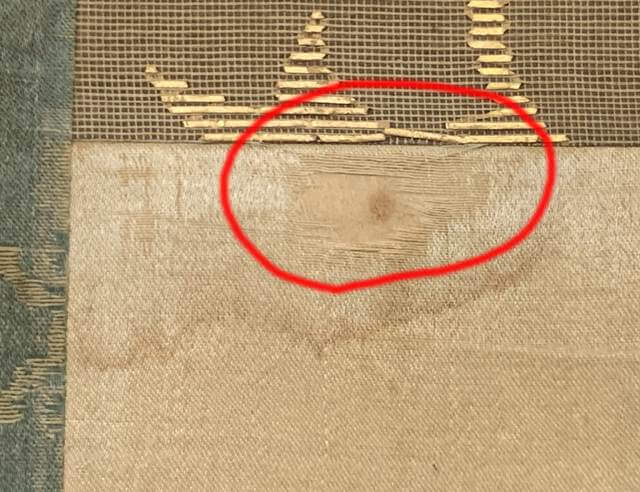
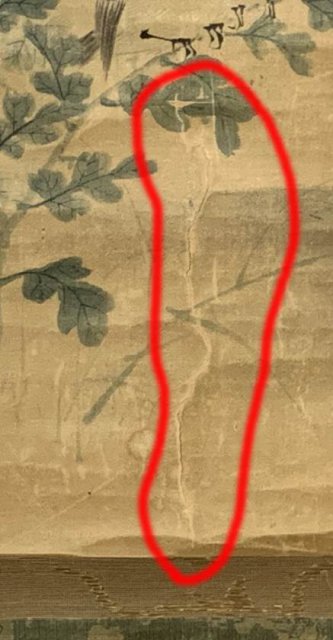
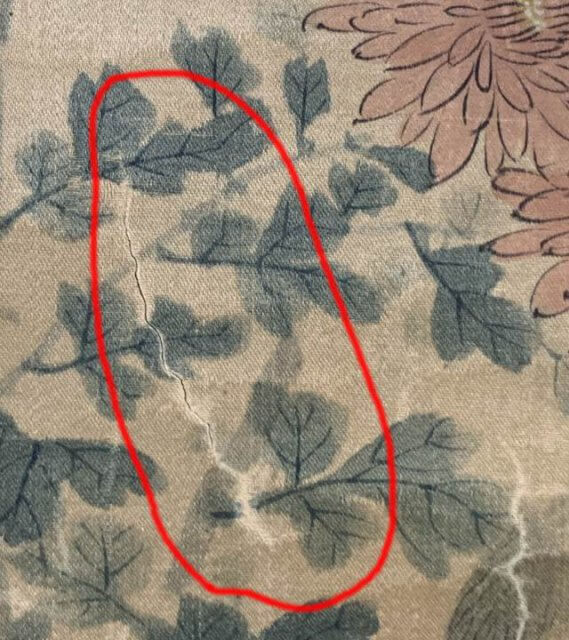
We found more similar damage other than the areas in the red circles. The discolored area that looked like scars were probably made due to a scratch. We assumed the scratch was a result of silk getting old and deteriorating. The silk became thinner and weaker and then became fragile against external stimuli.
Specifications of the Remounting
After spending a long time to discuss the details, we finally confirmed specifications of the remounting as per the following:
For the cleaning and stain removal, we will use water only or a low concentration detergent in a short period of time that we feel safe for the painting.
We will apply thin strips of Japanese paper to where it is brittle (eg. losses, deep creases and scratches) on the backside of the painting for reinforcement. (a process called “ore-fuse”)
We will do hosai (additional toning).
Mounting style : Gyou-no-gyou mounting style. (Please refer to : https://nomurakakejiku.com/lesson_lineup/yamato- style- mounting)
Mount fabric size : We will decide it, taking the overall balance into account.
Option : Futomaki-style Paulownia wooden box (Futomaki is a tool to make a diameter of the scroll bigger and helps to preserve a hanging scroll in a good condition.)
Mounting fabric : as per the photo below.
Restoration Process
Omote-uchi
Removal of Old Backing Paper
Smoothly removed.
Cleaning
To protect the damaged painting, we kept the cleaning process to a minimum and it worked out.
Applying New Backing Paper
Wrinkles and creases were smoothed out. We could save those already torn parts.
Removing Facing Paper
Successfully removed. Until this moment, all was on track as expected. And then, we found that the painting had countless scars and the silk material was heavily torn. These parts were unnoticeable at first because the creases, torn and damaged parts were covered with dirt. After cleaning, they became apparent.
Hosai (Toning)
The process was time-consuming than we planned. The reason was because, the silk material of the painting was sleek and shiny which is unique for Japanese painting. We applied pigments to make the “white scratches(torn-areas)” look natural but the glossy effect of the silk troubled us. The torn silk looked different when seen from different angles due to the glossy effect.
After taking a long time and making many attempts for hosai, we thought we reached the certain limit of what we could achieve. Please see the photo below. This is the best we possibly could.
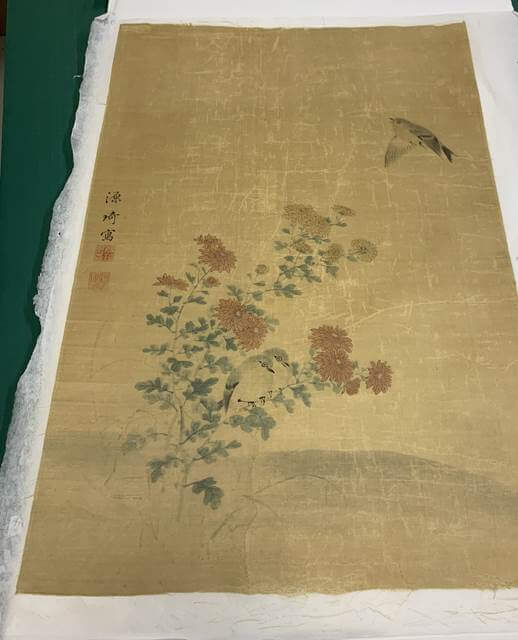
Please see the photos below for the before and after results.
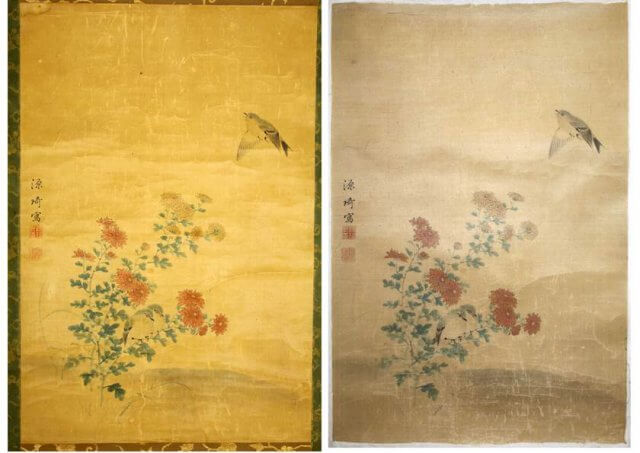
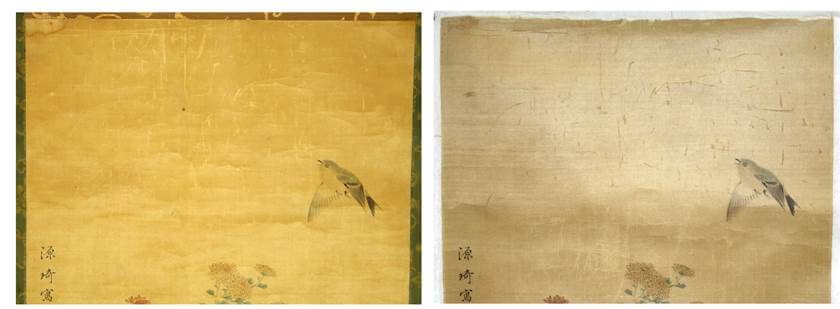
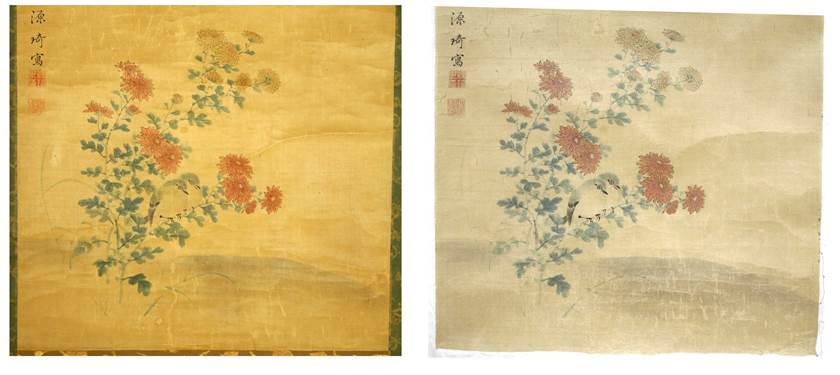
Preventive Measure against Creases: Ore-fuse (Reinforcing the Existing Creases from the Back of the Painting)
Cut and Join (Tsuke-mawashi/Kiri-tsugi)
Folding Over the Edge (Mimi-ori)
Finishing
Restoration Completed
The time-consuming restoration was finally finished!! The kakejiku was brought back to life.
We used the futomaki-style box as the photo below. The scroll had many creases so it would perfectly protect the scroll in terms of the longer and better preservation.
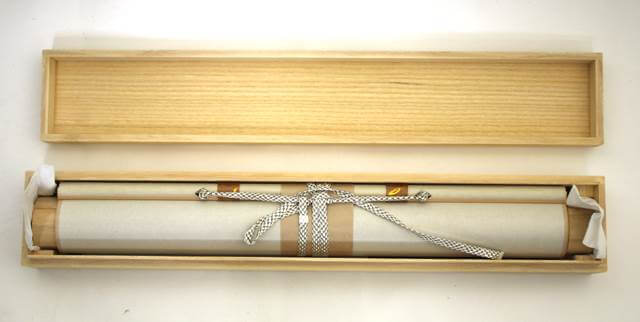
Feedback from the Client
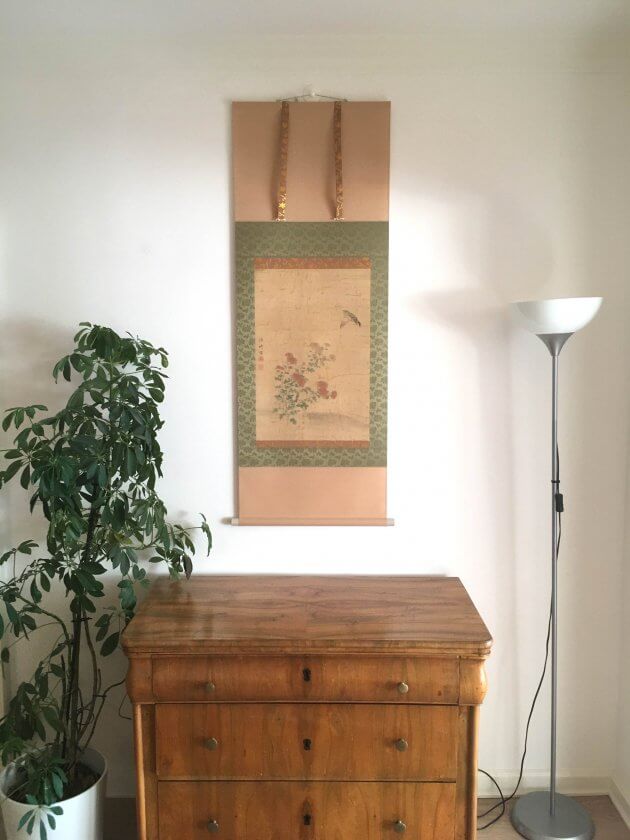
After the kakejiku made it home safely, we received a great feedback and a photo from the happy client!
Today we have picked up the package at customs and everything went smoothly.
Thank you again for your wonderful work. The painting has been restored beautifully and the new box fits perfectly.
Please find the attached photo of the current place for the kakejiku. It may not be the final resting place and I plan to place an ikebana on the chest.
Regrettably, the light was not perfect.
Team ART NOMURA and us are all glad and honored to receive his kind comments towards our work. Thank you very much!
We want to ensure that we offer the best service to all our clients consistently, so we constantly strive for further improvement of our service.
Need help with your damaged kakejiku? Please do not hesitate to reach out to us.
Movie

